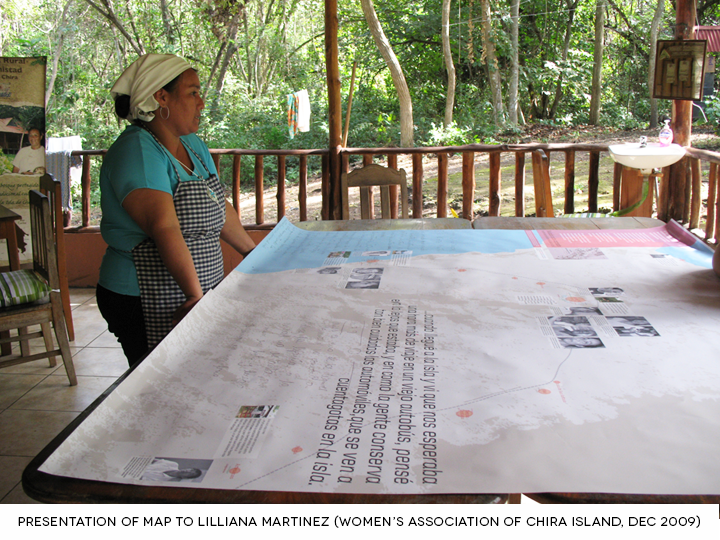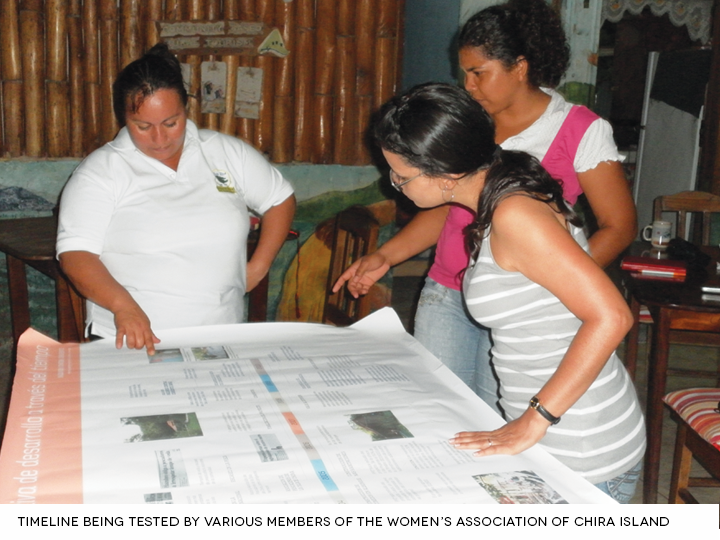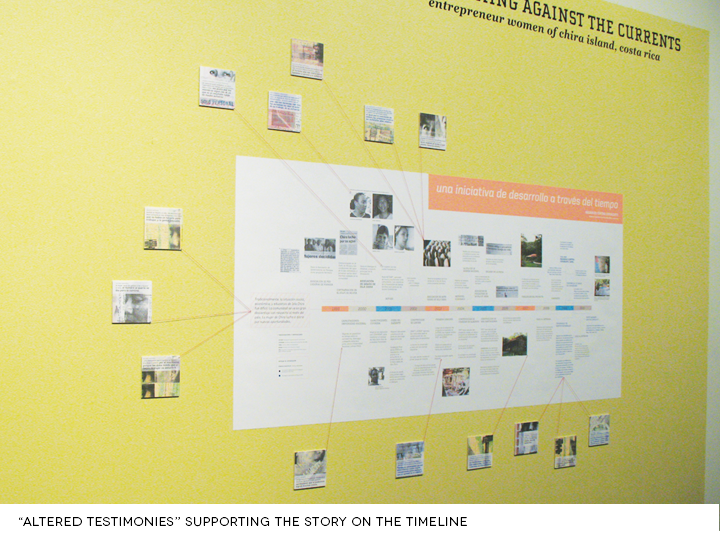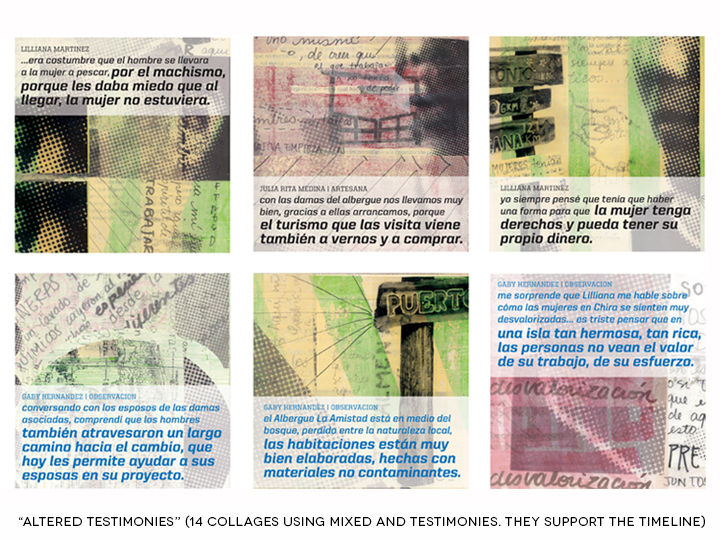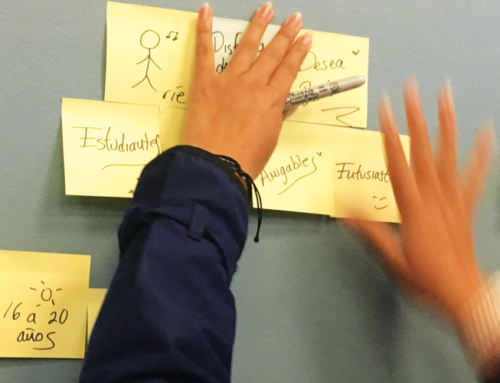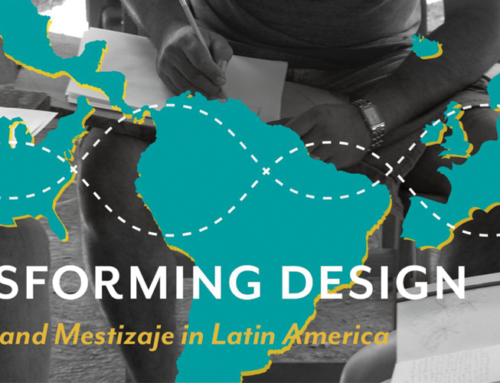The Women’s Association of Chira Island was established in 1999 with the goal to develop a unique and pioneering ecotourism project in their community: Chira Island, in the Pacific region of Costa Rica.
Although their project has been successful and have received national recognition, these women have confronted endless obstacles and challenges in order to attain success. They have changed their own perception of self-value and questioned social roles in order for their project to work effectively in the Chira Island community. Now, they consider self-esteem as their most valuable resource.
My MFA creative project, the content of which was developed during three field research visits to Chira Island in 2009 and 2010 with support from the Tinker Scholarship (granted by the Center for Latin American Studies of the University of Florida), employed ethnographic and design research methods to explore the concepts of time, space, and voice to visually communicate the story of these women, their association, and the implications of their project for the community and their families.
The resulting exhibition and related project materials, all designed for easy mobility and reproduction, are intended to inspire other women in rural areas in Costa Rica and Latin America to carry out their own development initiatives.
With this project I explored the impact of visual storytelling and how design research can incorporate different activities and field research methods to produce context-specific information, in order to encourage a kind of design that is collaborative and that understands real-world needs. Being in direct contact with people, understanding their life style and motivations, instead of working in a vacuum or solely from a studio space, are activities that open channels for discussion and collaboration to help solve communication needs that can enhance the livelihood of a specific community.
PROJECT OUTCOMES
Map of Connections> This map was first developed as a book, composed of different layers in order to visualize economy, social roles, religion, the relation between the members of the association and their husbands, their relation with their families, the community, and their own personal backgrounds. Several revisions of this map led the development of a larger piece, using only one layer to represent all the connections through color, but incorporating pictures of places and people, with the use of thick descriptions to contextualize the space and the life of the women of the association.
The final version of the map (80×65 in), was first presented in December of 2009 to my Creative Project committee, other faculty members, and graduate peers. Later that month, I took the map to Chira Island to proceed with its user testing. This piece can be displayed alone, or it can be part of the whole materials system I created to visualize the story of the association in different ways.
Timeline> After the definition and production of the Map of Connections, I started to consider more ways to represent the story of this association of women. I developed a Timeline that represents ten years in the story of the association. This Timeline is divided into two levels: the upper part has facts that relate directly to the development of the association and its relation with other groups of people in the island, other associations, and instances when they received national media attention. The lower part shows activities carried out directly by the association during those years. For example, the construction of the cabins in 2003 and their first trips to ecotourism conferences in Guatemala, in 2009.
This Timeline can accompany the Map of Connections and the rest of the pieces (as a storytelling system) or be displayed alone, depending on the context and space it is used. This piece was also taken to Chira Island for user-testing with members of the association and their families.
“Altered Testimonies”> To support the Timeline, I developed a series of small collages that derive from an altered book I developed based on my field research activities and the life and story of the women’s association. These collages deal with different visual explorations of texture, color, text, image, and interviews from field trips. Mixing these mediums and excerpts of testimonies resulted in visually engaging portraits of the story, where both the message and the visuals support different facts along the Timeline.
Cards of Testimonies> While working on the Map of Connections, I developed a series of cards called Testimonios. These cards are a collectible set of inspirational messages from the members of the association of women. Each card shows a photograph of a woman with her corresponding message. On the back, there is a floral pattern based on the flora found in the lodge area.
Video> A representation of their story through voice, I developed a twelve minute video when the women tell their story themselves. It is divided into chapters, where the women speak about the beginning of their association, the limitations that women in the island have confronted to improve their economy and livelihood, the planning of their ecotourism project, and the support they have received from different national and international development entities.
This video almost exclusively employs recorded interviews from my first field-research visit to the island, in spaces such as La Amistad Lodge and Palito Port where the majority of the women live.
______
Project Keywords
Design for Development, Visual Storytelling, Design Research
Dissemination
This project was presented as a case study at the Design Research Society Biannual Conference 2016 in Brighton, UK. Download full paper.
